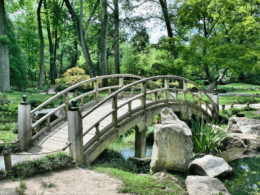Are you tired of the same old gardening routine? Want to try something new and innovative? Look no further than upside-down gardening! With this beginner’s guide, you’ll learn all the basics of this unique and exciting way of growing vegetables and herbs.
In this guide, you’ll discover the benefits of upside-down gardening, such as reduced pest issues and fruit free of ground damage. You’ll also get expert tips on how to increase your success and choose the right location and planter style.
Whether you have a large outdoor space or just a small balcony, upside-down gardening is a great way to get creative and try something new. So why not flip your garden and give it a try?
Quick Takeaways
- Upside-down gardening is a unique and innovative way to grow vegetables and herbs suitable for upside-down planting, requiring careful consideration of location and planter style.
- Five-gallon plastic buckets are a popular and effective planter option for upside-down gardening, but it is important to emphasize proper filling and hanging of the planter to avoid potential issues with soil dryness and weight.
- Expert tips for increasing success with upside-down gardening include detailed instructions for filling and hanging the planter, as well as recommendations for adjusting hanging height as stems grow longer underneath and using sturdy plant hangers capable of holding at least 20 pounds.
- Upside-down gardening is easy to care for, reduces pest issues, and allows for harvesting more fruit free of ground damage, making it a great option for anyone with available outdoor space, no matter how big or small.
What is Upside-Down Gardening?
So, you wanna know what upside-down gardening is? It’s a method of growing plants where the roots are at the top and the leaves and fruit hang down below the pot. This technique is a great way to maximize your garden space, especially if you have limited outdoor area.
Plus, it also has numerous benefits, like reducing pest issues and allowing for harvesting more fruit free of ground damage. Upside-down gardening is suitable for a variety of plants, including tomatoes, strawberries, and herbs.
However, it’s important to choose suitable plants that have shorter root systems and grow well in containers. By using this method, you can enjoy fresh veggies and herbs all season long, without the hassle of traditional gardening techniques.
Pros and Cons
You may be wondering about the advantages and disadvantages of upside-down gardening. It’s important to weigh the pros and cons before diving into this unique gardening method. One of the biggest advantages is that it reduces pest issues and allows for harvesting more fruits free of ground damage. Additionally, upside-down gardening is easy to care for and requires no staking or tying of plants to keep them from falling over. It also allows for quick delivery of moisture and nutrients to the root system with no guesswork.
However, there are also some disadvantages to upside-down gardening. One potential issue is soil moisture. Since the soil is above the plant, it can dry out quickly and may require more frequent watering. Another issue is plant growth abnormalities. While this is mostly aesthetic and can be minimized by keeping pots high off the ground, it’s important to be aware that full-grown and ripe fruit may be too heavy for weaker hardware and may require extra support. To help you weigh the pros and cons, here is a table summarizing the advantages and disadvantages of upside-down gardening:
| Advantages | Disadvantages |
|---|---|
| Reduces pest issues | Soil moisture |
| Allows for harvesting more fruits free of ground damage | Plant growth abnormalities |
| Easy to care for | Full-grown and ripe fruit may be too heavy for weaker hardware |
| Requires no staking or tying of plants to keep them from falling over |
Remember, it’s important to consider both the advantages and disadvantages before starting your upside-down garden. With proper care and attention, upside-down gardening can be a unique and rewarding way to grow fruits and vegetables in your own backyard.
Can Upside-Down Gardening Techniques Be Used to Hang a Tree Swing Safely?
When it comes to tree swing safety tips, hanging a tree swing using upside-down gardening techniques may not be the safest option. Upside-down gardening typically involves hanging plants from overhead structures, which might not provide the necessary stability and support for a swing. It’s essential to prioritize safety by using proper methods, such as securing the swing to a sturdy branch with appropriate hardware and regularly inspecting for any signs of wear or damage. Remember, safety should always be the primary concern when enjoying outdoor activities like tree swinging.
Location and Planter Considerations
Consider where to hang and what type of planter to use for your plants when starting an upside-down garden.
A suitable location for your upside-down garden should have full 360-degree exposure to sunlight. Before choosing a hanging location, test the sunlight conditions to ensure that your plants receive enough light. If necessary, turn your pots daily to ensure even sunlight exposure.
When it comes to the planter, a five-gallon plastic bucket is one of the best options available. However, make sure the handle is sturdy enough to hold at least 20 pounds of weight. If you’re making your own planter, ensure that it’s strong enough and has a secure attachment to prevent damage to your crops.
The hanging height of your planter can be adjusted as the stems grow longer underneath, but it should not be too low to reach animals or drag on the ground.
Expert Tips for Success
To increase your success with upside-down gardening, try following these expert tips.
When choosing plants for your upside-down garden, it’s important to consider their root structure and weight. Some plants, like tomatoes and strawberries, are great options for upside-down gardening because they have shallower roots and aren’t too heavy for the planter. On the other hand, plants with deep roots or heavy fruit, like cucumbers or watermelons, may not be the best fit.
In terms of equipment needed, it’s important to invest in sturdy hardware for hanging your planter. Make sure your plant hanger is capable of holding at least 20 pounds, and don’t rely solely on weakly attached handles on DIY buckets.
Additionally, consider using a drip-irrigation system and plastic wrap to keep your planter moist, especially if using store-bought upside-down planters made of thin, plastic-like material.
By following these expert tips, you’ll be well on your way to a successful upside-down garden.
Frequently Asked Questions
How much weight can a sturdy plant hanger hold for upside-down gardening?
A sturdy plant hanger can hold at least 20 pounds for upside-down gardening. When hanging upside down on wooden structures, use rope or chain and S-hooks or attach a heavy-duty hook. Always make sure the hanging height is safe and secure.
Can upside-down planters be hung from wooden structures or do they require solid wood framing?
Yes, upside-down planters can be hung from wooden structures, but it is important to consider the hanging weight capacity. Use rope or chain and S-hooks for arbor-like structures, or screw a heavy-duty hook into solid wood framing for other locations.
What is the best way to adjust the hanging height of upside-down planters as the stems grow longer?
Adjusting the height of upside-down planters is easy. Choose from staking options like rope or chain, or adjust the hanging hook as stems grow longer. Make sure the planter is high enough to avoid animals or dragging on the ground.
Are there any disadvantages to growing full-grown and ripe fruit in upside-down tomato gardens?
When growing full-grown and ripe fruit in upside-down tomato gardens, timing of harvest and soil moisture are key considerations. Abnormal growth can occur, but keeping pots high off the ground can minimize it.
Can upside-down gardening be enjoyed indoors or is outdoor space necessary?
Upside-down gardening can be enjoyed indoors with proper space requirements. Aesthetics can be improved with decorative containers. Maintenance is easier with drip irrigation systems. Ensure proper sunlight exposure and avoid damaging indoor surfaces.








